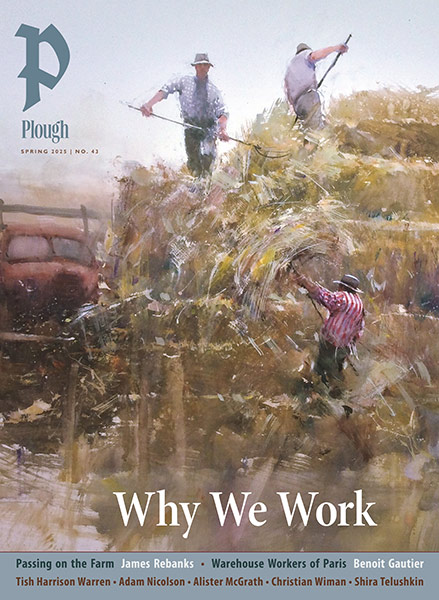Subtotal: $
Checkout
Powerless at the Foot of the Cross
While caring for the dying, a hospice doctor often experiences the same powerlessness Mary must have at the foot of the cross.
By Sheila Cassidy
April 13, 2025
“Near the cross of Jesus stood his mother and his mother’s sister, Mary the wife of Clopas, and Mary of Magdala.” —John 19:25
Stabat mater Dolorosa
Juxta Crucem lacrimosa
Dum Pendebat filius
Cujus animam gementem
Contirstatem et dolentum
Pertransivit gladius
At the cross her station keeping
Stood the mournful mother weeping
Close to Jesus to the last.
Through her soul of joy bereaved
Bowed in anguish deeply grieved
Now at length the sword had passed.
—Ascribed to Jacopone da Todi (ca. 1230–1306). "Stabat Mater" is a thirteenth-century Latin hymn for the Feast of Our Lady of Sorrows.
In the care of the dying, as in many other fields of endeavor, there comes a time when the caregiver’s hands are empty, when all the treatment maneuvers have been explored, all the words of comfort said. It is then that one is left standing at the foot of the bed, useless, impotent, wanting more than anything else to run away.
The first lines of “Stabat Mater,” etched in my memory from twenty years of pre-Vatican II liturgies, capture better than any photograph the agony of the death-bed vigil. In seven years of caring for the dying, I have stood at over a thousand bedsides and shared in the impotence of families and friends as they watch the life ebb away from someone they love. This powerlessness to prevent impending death is one of the hardest things for caregivers to come to terms with, especially when the dying person is young. It produces all sorts of emotions which are often unexpected and hard to handle and may lead to patterns of behavior which, misunderstood, can cause considerable distress, both to the person experiencing the emotion and those around him or her. The hospice movement, with its philosophy of openness, is producing a marvelous healing of the medical and nursing profession’s wounded attitude toward death and dying, a recapturing of the ancient acceptance of death as part of life.

Rogier van der Weyden, Descent from the Cross, oil on oak wood (detail), ca. 1440.
It is here that we must learn the spirituality of the foot of the cross, the stance of the impotent bystander. Of all the vigils that come to mind, the one that I recall with greatest heartache is that of a young woman called Ros who died in our hospice on Christmas day. Ros was only twenty-eight when she died. She had a brain tumor which recurred a year after treatment and, in its final stages, caused her terrible headaches and bizarre hallucinations. Her last days at the hospice have remained fresh in my memory because of the singular poignancy of the circumstances. Ros was a doctor and, knowing that the tumor had recurred, faced death with a particular courage and charm. Absurdly, or course, she thought she was a coward; as the brave always do. She mistook fear for cowardice, and wept for her frailty, angry that she was not coping as well as she had hoped….
Anyway, she gathered strength and went home for a week, and then when things became bad she came back. Together we faced the last lap. As it happens it was the week before Christmas, and Ros’s mother kept vigil at her bedside amid the decoration of the house and all the preparations for the coming feast…. It must have been three or four days, perhaps longer that her mother sat – a quiet composed woman, apparently asking nothing more of us than we gave her by instinct and by profession. Surely, I thought, this is the stuff of Holy Week, not Christmas, of the woman at the foot of the cross, not the Madonna.
Slowly, as the years go by, I learn about the importance of powerlessness. I experience it in my own life and I live with it in my work. The secret is to not be afraid of it – to not run away. The dying know we are not God. They accept that we cannot halt the process of cancer, the inexorable march of that terrible army that takes over a human body like an occupying force, pillaging, raping, desecrating without respect and without quarter. All they ask is that we do not desert them: that we stand our ground at the foot of the cross. At this stage of the journey, of being there, of simply being: it is, in many ways, the hardest part.
Source: Sheila Cassidy, Sharing the Darkness: The Spirituality of Care (Darton, Longman and Todd, 1988), 102, 58–64. Used by permission.
Already a subscriber? Sign in
Try 3 months of unlimited access. Start your FREE TRIAL today. Cancel anytime.






